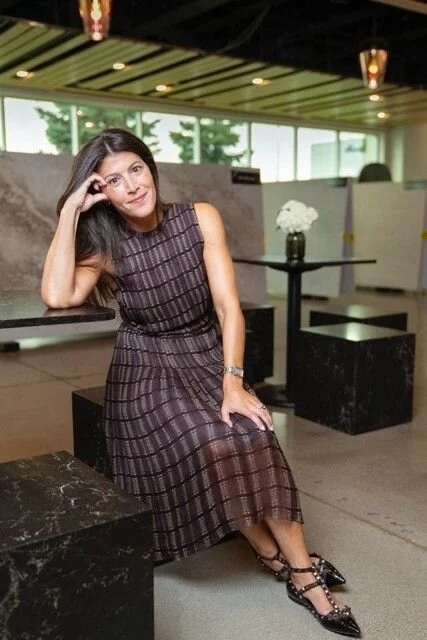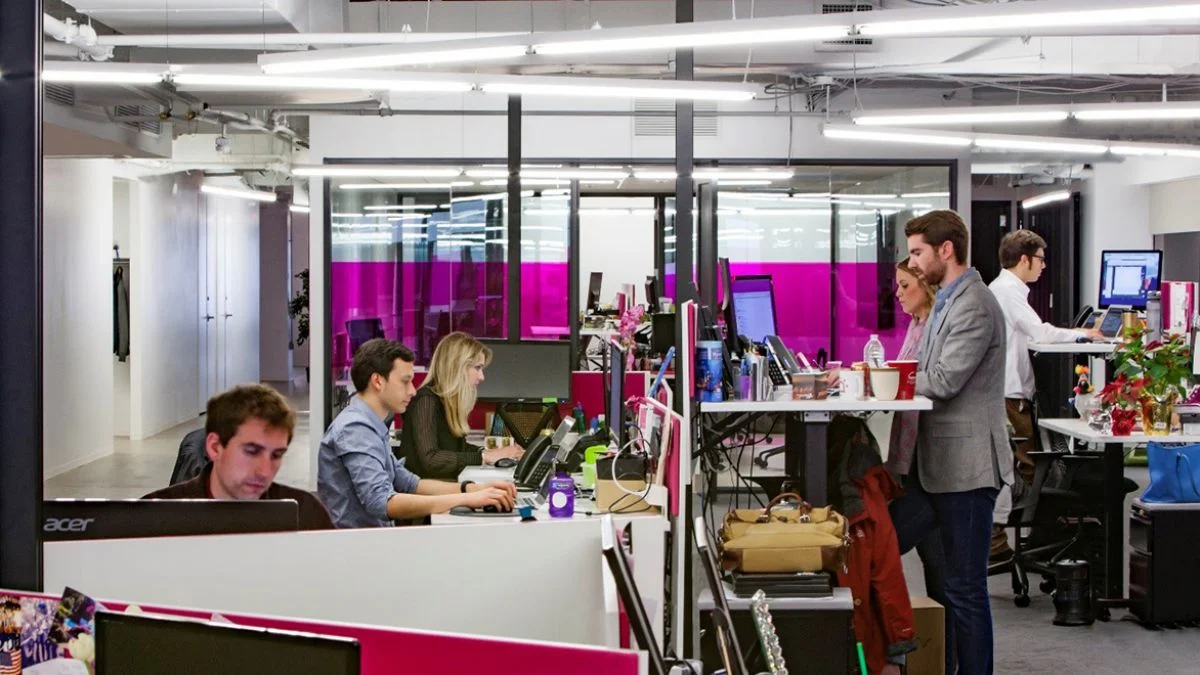Amongst the goals, concerns, and aspirations of our clients shaping workplace design today, there are two constants: money and space. In today’s budget-conscious environment, reducing square footage is one of the primary drivers for new workplace design. Firms and organizations like the idea of moving to a smaller space and saving money on their lease. In fact, reducing square footage is probably the No. 1 goal I hear about today when we start working on a new office. Square footage requirements balanced against program needs drive the design discussion.
The Future of Office Design: Nature-Inspired, Tech-Enabled and Privacy On-Demand
Workplace design is more than just armchairs and lobby couches: Studies have shown that a well-designed workspace and furniture can boost employee productivity and happiness (all which can impact the organization's bottom line).
5 clues that your office is a psychologically unhealthy workplace
Do you hate your job? Your toxic work environment might be to blame. A psychologically unhealthy workplace increases stress, anxiety, and depression in employees. In a 2012 report for the Mental Health Commission of Canada, reported by Psychology Today, Martin Shain argued that even people without mental illness could experience issues as a result of working in "psychologically unsafe workplaces."
This Is What Employees Of Companies Like Google, Facebook, And Amazon Think About Their Employers
Google came out on top for overall company culture scoring 71 out of 100. Facebook was a close second at 68; Microsoft at third place scored 66. Apple and Amazon rank at the bottom, but their scores were close to the others, each earning 65 out of 100.
The workplace experience will define how real estate enables business transformation
JLL has Tuesday launched ‘Workplace powered by Human Experience’, a new global report series and accompanying tool, the ‘Human Experience model’, looking at how workplace experience can help businesses thrive in the new world of work. Findings of the report, which is part of JLL’s recently launched Future of Work research program, are based on consultations with decision makers at 40 corporations around the world and the results of a separate, anonymous survey of more than 7,300 employees working for companies with more than 100 members of staff.
The Dynamic Work Environment
As millennials pour out of college eager to find jobs, commercial real estate costs per square foot rise, and businesses continue to expand in our growing economy, the office design industry continually sees an increase in our ever-changing office environment.
The "Human" in Human-Centered Design
A Human-Centered Design process simply means that we design for the humans who will use the solution. Design is not based on our preconceived notions of what an effective learning environment is or those “me too” inclinations. Human-Centered Design creates the “why” and also lays the foundation for authentic creation.
The five elements of a happy workplace
Every generation has different needs – yet one might argue the workplace has not considerably changed in recent years. London-based interior design firm YourStudio has been rethinking the workplace, attempting to determine the characteristics of a successful work environment.
Will an open office environment work for you?
Though people still talk about the corner office as a benchmark of success in the workplace, more and more companies are tearing out cubicles and private offices in favor of open floor plans with flexible furniture. The potential benefits of open offices—flexibility, opportunities for collaboration, and reduction of hierarchies—are appealing to companies that want to encourage innovation, but some projects require a level of focus best obtained in an enclosed, private space.
The *Real* Reason Open Offices Bother Us So Much
You know, I think this “being watched” concern might actually be the root cause of our issue with openness. Often, when I’m working with teams to design their space, they use other reasons for not wanting to be in an open office environment.
The Decline of the Baronial C.E.O.
“The C.E.O. with a big office, a tenure of 10 or 20 years, in a suit and tie, is becoming a thing of the past,” said Vijay Govindarajan, who served as G.E.’s chief innovation consultant in 2008 and 2009 and now teaches at Dartmouth’s Tuck School of Business.
The five secrets to mastering workplace design
The primary purpose of a well-designed workplace is to nourish personal energy—individual comfort and well-being, to maximize employee potential and productivity. Next, workplaces are tools to build organizational capital, i.e. to strengthen and shape work cultures, structure and processes. Third, an office is a potent platform to communicate brand values. And finally, some progressive leaders have begun to think of workplaces as a resource to sustain the environment.
How Furniture can affect productivity and Wellness in Workers
Being able to quickly and easily interact with co-workers is vital in an office setting, and being able to move your desk around allows one to do so without disruption. Increased flexibility ultimately allows the employees to accomplish more throughout the day and be more productive in the long run.
EMPOWERING CREATIVE EXPRESSION
At NeoCon 2017, we discussed creative expression and shared new custom capabilities in the Coalesse showroom. We believe engaging the design community in customizing our products can empower more personalized and meaningful outcomes.
"Apple's new campus sucks" according to Wired magazine
"By building a mega-headquarters straight out of the middle of the last century, Apple has exacerbated the already serious problems endemic to 21st-century suburbs like Cupertino – transportation, housing, and economics."
Riffing on the issue of workplace design and creativity
We are often told that one of the main objectives of workplace design these days is to help people become more creative. Now, there are all sorts of complications bound up in this, not least the assumption that you can help or even will people to become more creative, especially in an environment that still wants, in some way at least, to supervise what they do and when and where they do it. A working environment designed for creativity only works in the context of a culture that facilitates it. And here’s where the problem lies. Some traditional and proven avenues to creativity should remain closed to workplace occupiers and designers – not least misery and drugs – so that leaves them with a bit of a challenge.
Decibels and Cubicles: The Challenge of Workplace Noise
How loud is too loud? Well, that depends.
Workplace noise (and its effects on employee health and performance) has been a topic of research since at least the first half of the 20th century, but despite the attention given to the issue, the challenge remains a thorny one.
The Workspace Of Tomorrow: Part 2
Every building has to meet several basic requirements such as security, fire-life-safety, ventilation, lighting, health and comfort. The systems required to provide these building control services are collectively known as building automation systems (BAS). The biggest challenge facing the BAS industry is the myriad of protocols that exist within the industry. The result is a world in which systems that perform similar functions cannot communicate with each other.
WANT A HEALTHY BUILDING? FOLLOW THIS PRIMER ON TWO NEW WELLNESS STANDARDS
While our industry’s focus on wellness may seem like just the latest trend, occupant health has been an important goal of the built environment for centuries. In the 1800s, urban infrastructure allowing access to fresh water, natural light, and clean air significantly reduced the number of deaths from infectious diseases like tuberculosis, cholera, and yellow fever. Additionally, in the 1900s, doctors consulted on the design of school gymnasiums, advising on how the environment could help support human health.
4 Myths About The Modern Workforce
The workforce plays a huge role in the economy as a whole and in each individual company. After all, most businesses invest more time and money in their employees than they do in anything else. The workforce is changing and will continue to transform as we move towards the future of work, meaning that having a strong understanding of the workforce is incredibly important.

























